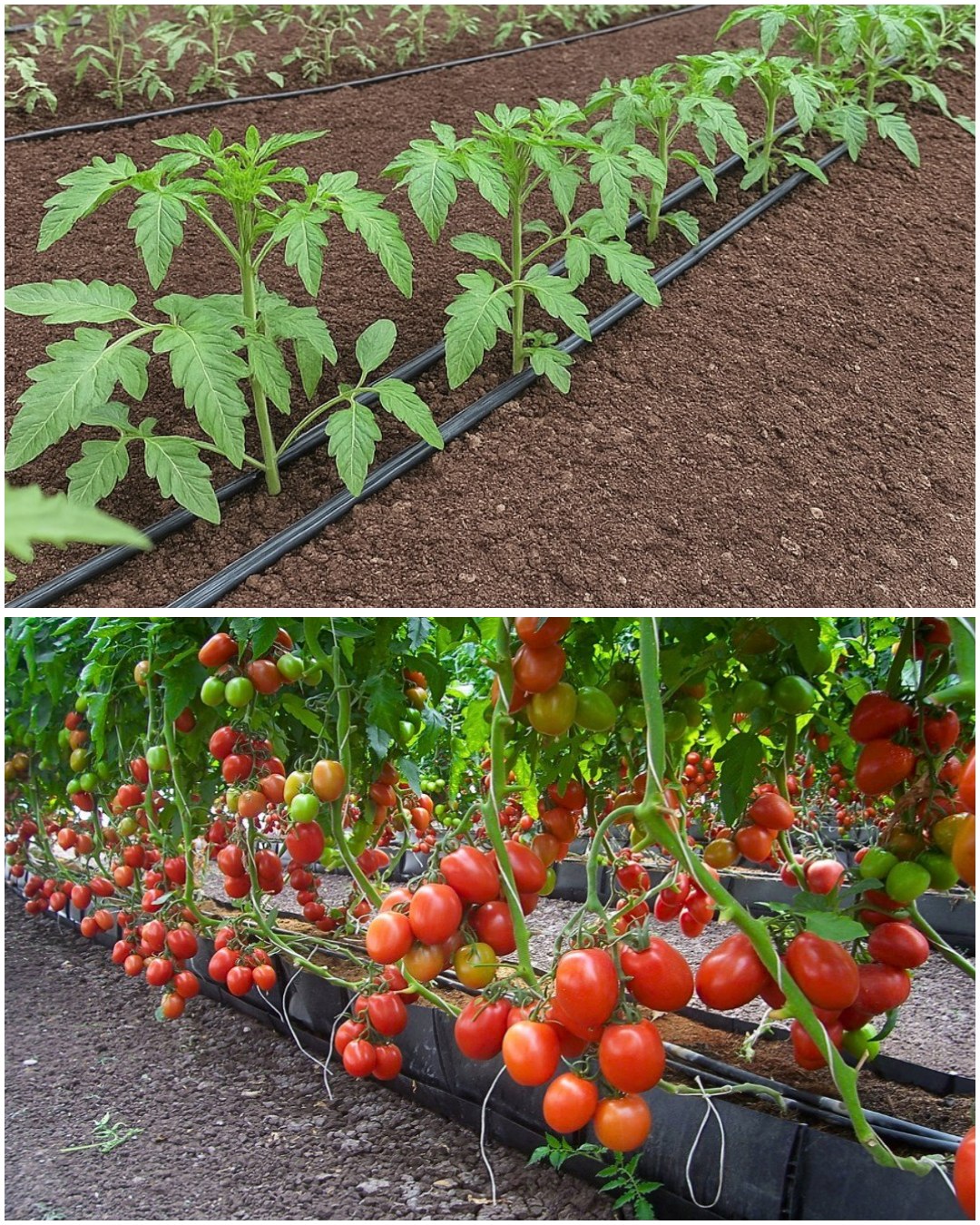Growing Tomatoes Without Watering, Doubling Yield, and Harvesting Continuously
Tomatoes are one of the most popular and rewarding crops to grow at home. They’re flavorful, versatile, and packed with nutrients. But did you know you can grow tomatoes with little to no watering, increase your yield, and enjoy continuous harvests—all without complicated equipment or heavy maintenance?
This might sound too good to be true, but it’s entirely possible by using smart gardening techniques that focus on soil health, deep root growth, and water retention. These natural methods not only save water but also improve the quality and quantity of your tomatoes. Whether you’re a beginner or a seasoned gardener, this approach is easy to follow and highly effective.
The Key Principle: Strong Roots and Moisture Retention
The core idea behind growing tomatoes without frequent watering lies in training the plants to develop deep, strong roots and creating a soil environment that retains moisture effectively. With the right preparation and a bit of patience, your tomato plants can thrive with minimal watering—even during dry spells.
Step 1: Preparing the Soil for Water-Free Growth
Good soil is the foundation of successful tomato gardening. To grow tomatoes with minimal watering, your soil needs to be rich, loose, and capable of holding moisture.
-
-
Dig Deep: Loosen the soil at least 12 to 18 inches deep to allow roots to penetrate and spread. Remove stones or debris.
-
Add Organic Matter: Mix in compost, aged manure, or coconut coir. These materials improve soil structure and help retain moisture.
-
Mulch Heavily: Once your tomato seedlings are established, apply a thick layer (at least 2–3 inches) of organic mulch such as straw, dry leaves, or grass clippings. This prevents evaporation, keeps the soil cool, and reduces weeds.
-
Step 2: Strategic Planting for Root Strength
Planting tomatoes deeply encourages the development of a stronger root system, which allows the plant to access water stored deeper in the soil.
-
Trench Planting Method: Instead of planting vertically, lay the seedling sideways in a shallow trench and cover most of the stem with soil, leaving just the top few leaves exposed. Roots will form all along the buried stem, strengthening the plant and making it more resilient to dry conditions.
-
Spacing: Give your tomato plants plenty of room—at least 18–24 inches apart—so they don’t compete for water and nutrients.
Step 3: The Watering Technique – Train Your Plants
To grow tomatoes without watering regularly, you’ll need to train them from the beginning to seek moisture deep in the soil.
-
-
Initial Watering: Water the newly planted tomatoes thoroughly to help them establish.
-
Then Hold Back: Once plants are established, gradually reduce watering. This encourages the roots to grow downward in search of water rather than staying shallow and dependent on surface moisture.
-
In regions with decent rainfall or naturally moist soil, you may not need to water again at all. In drier climates, watering every 10–15 days may still be necessary during peak heat, but far less than traditional daily or weekly watering.
Step 4: Doubling Your Yield Naturally
There are a few easy ways to increase your tomato yield without using synthetic chemicals:
-
-
Prune Wisely: Remove the lower leaves and suckers (the small shoots that grow between the main stem and branches). This redirects the plant’s energy into fruit production instead of unnecessary foliage.
-
Use Compost Tea: A homemade compost tea made from soaking compost in water for 2–3 days adds nutrients directly to the soil or leaves and stimulates healthy growth.
-
Rotate and Companion Plant: Grow tomatoes in a new spot each season and pair them with basil, marigold, or garlic to improve flavor and deter pests naturally.
-
Step 5: Continuous Harvesting Tips
Tomato plants can continue producing fruits for months if properly cared for. To keep the harvest going:
-
-
Harvest Regularly: Pick ripe tomatoes promptly. This signals the plant to continue producing new fruit.
-
Top the Plants: Once the plant has reached its desired height (usually around 4–5 feet), cut off the top of the main stem. This focuses the plant’s energy on ripening existing fruit and producing side shoots with more flowers.
-
Rejuvenate Older Plants: If your plant begins to slow down after a few months, cut back older branches, apply fresh compost, and mulch again. This encourages new growth and more flowers.
-
Final Thoughts
Growing tomatoes without regular watering is not just possible—it’s highly rewarding. With the right soil preparation, planting techniques, and natural care, you can double your yield and enjoy fresh, juicy tomatoes throughout the growing season without relying on daily watering.
This method saves time, conserves water, and results in healthier, more productive plants. Whether you’re growing in a backyard garden, raised bed, or containers, these principles can be applied to transform your tomato-growing experience.
Give this natural, low-maintenance method a try—you may never go back to your old routine again.
